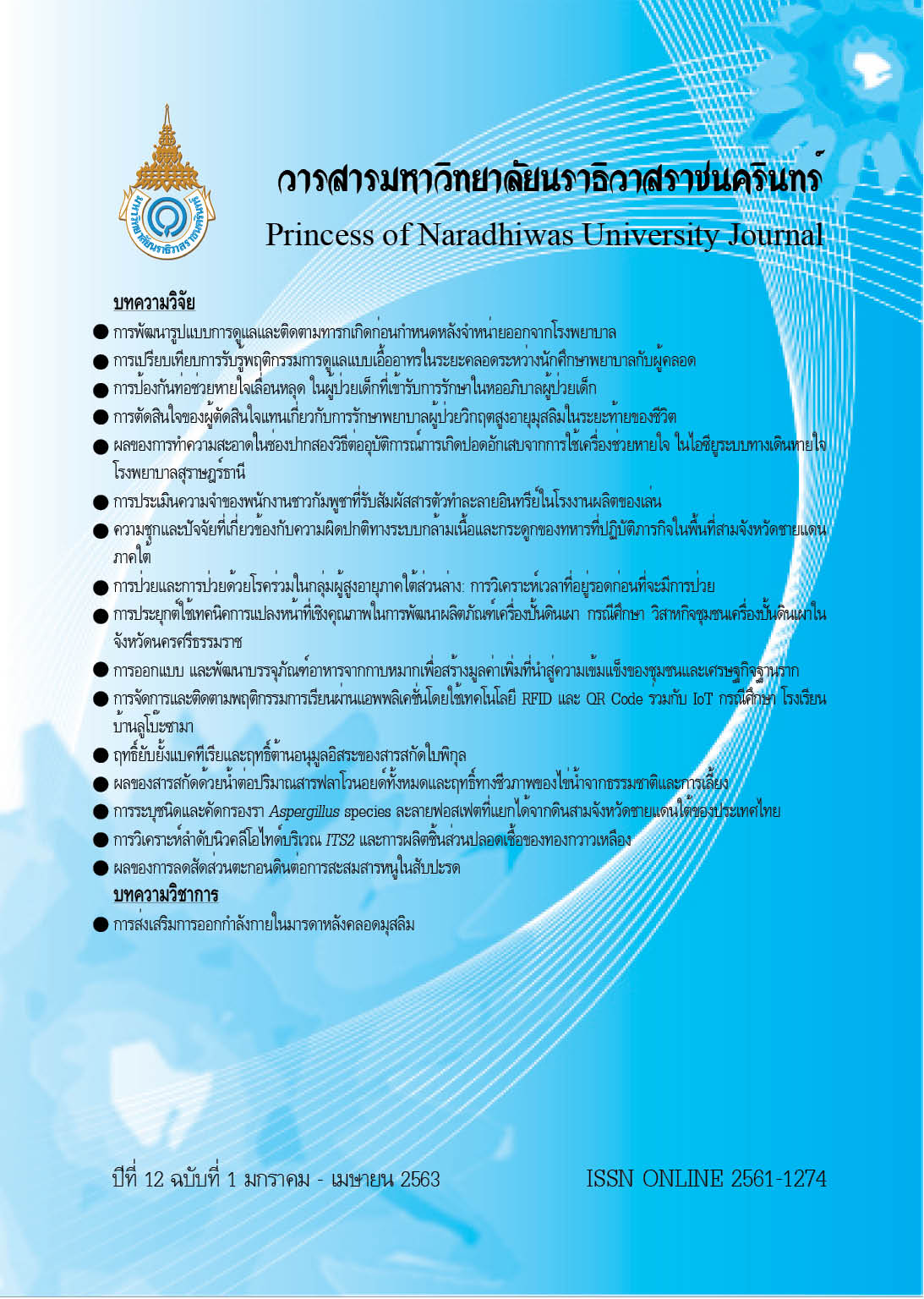Application of Quality Function Deployment in Development of Products Pottery: A Case Study of Pottery Community Enterprise in Nakhon Si Thammarat Province
1 Faculty of Engineering, Rajamangala University of Technology Srivijaya, 2 Faculty of Engineering, Princess of Naradhiwas University
Keywords:
Product Design, Quality Function Development, Pottery, CommunityAbstract
This research examined the application of the quality function deployment (QFD) process in the product planning phase, in order to develop pottery productsthat meet the customer’s exact needs. The customers’ needs were collected through 180 questionnaires, then they were classified, using both affinity diagrams and tree diagrams. The purpose of this classification was to analyze the customers’ needs and to develop product prototypes based on the quality function deployment process. According to the study, the main factors that the customers considered as priorities in choosing pottery were: 1) Thai identity, 2) harmless material, 3) beautiful and modern aspect, 4) reasonable price, 5) local identity, and 6) diverse styles. Knowing the characteristics of pottery products from the QFD process, the community pottery enterprise then applied these to the design of new pottery products. Afterwards, a new product satisfaction survey was conducted among pottery users. The product satisfaction was alsomeasured among customers and selling agent stores. The result of this research revealed that the average satisfactory values of all new types of products were increased greater than the old products from 3.241 to 4.028 points or increased about 0.787 points, it is to say by 24.3%.
References
Chan, L.K. & Wu, M.L.(2002). Quality Function Deployment: A Comprehensive Review of Its Concepts and Methods. Journal Quality Engineering, 15(1), 23-35.
Shih, H.S. & Chen, S.H. (2013). A Conceptual Design of a Mobile Healthcare Device-An Application of Three-stage QFD with ANP and TRIZ. International Journal of Operations Research, 10(2), 80-91.
Mohan, K. R., Lohit, H.S., Manas R. M., & Basheer, A.Md. (2012). Design of Multipurpose Wheel Chair for Physically Challenged and Elder People. SASTech Journal, 11(1), 107-117.
Ji, P., Jin, J., Wang, T.& Chen, Y. (2014). Quantification and Integration of Kano’s Model Into QFD for Optimizing Product Design. International Journal of Production Research, 52(21), 6335-6348.
Kengpol, A. (2005). The design and development of a new product by using quality function deployment (QFD) technique for SMEs. Faculty of Engineering, King Mongkut’s University of Technology North Bangkok. (in Thai)
Maythawisal, B. (2005). An Evaluation of Carrier Service by Using Quality Function Deployment Technique. Master’s Thesis, Graduate School, Chulalongkorn University. (in Thai)
Keawwandee, A. (2002). An Application of Quality Function Deployment Technique for the Design and Development of Leather Products. Master’s Thesis, Faculty of Engineering, Chulalongkorn University. (in Thai)
Ismail, I. N., Halim K. Ab., Sahari, K. S. M., Anuar, A., Jalal, M. F. A., Syaifoelida, F., et al. (2017). Design and Development of Platform Deployment Arm (PDA) For Boiler Header Inspection at Thermal Power Plant by Using the House of Quality (HOQ) Approach. Procedia Computer Science, 105, 296-303.
Pinta, A. (2003). The Improvement of Product by Using Quality Function Deployment (QFD) Technique: A Case Study of an Educational Wood Toy Factory. The Journal of King Mongkut’s University of Technology North Bangkok, 13(4), 36-42.
Joompha, W., & Pianthong, N. (2018). Development of Durian Chips Product by Apply of Quality Function Deployment. Journal of Science & Technology, Ubon Ratchathani University, 20(3), 204-218.
Sinthavalai, R. & Ruengrong, S. (2018). An Application of House of Quality (HOQ) for Designing Rice Product as a Souvenir. Naresuan University Journal: Science and Technology, 26(3), 36-51.
Patil, Sh.S., Gopinath C. & Suresha,S. (2016). Design and Development of an Automated Pottery Wheel for MSME. MSRUAS-SASTech Journal, 15(1), 21-24.




